The naginata is a halberd-like weapon that was the famed weapon and extensively used by the Sohei, warrior monks, of feudal Japan. Described by some as simply “a sword on the end of a long pole”, the naginata was actually a sophisticated weapon which required considerable skill and stamina to use effectively in battle. It consisted of a curved blade, 1 to 2 feet in length, mounted onto a wooden shaft that was usually 4 to 9 feet long. The actual dimensions of a naginata were primarily dependent on personal preferences and battle conditions.
The blade of the naginata is in the unokubi-zukuri shape. The term unokubi translates to “cormorant’s neck”. It refers to the tapering of a portion of the back of the blade giving it a false edge, while retaining the shape of the kissaki. The blade has 2 small grooves called “soe-hi” that runs along the shinogi-ji (flat of the blade) and features a “bonji” (Japanese sanskrit) with red lacquer. Red lacquer on blade engravings or bohi (groove) is often seen on very old blades, but more common on naginata than on swords. There’s no special meaning to it. It’s been said that lacquer was added to hide a flaw in the groove or engraving, or just cosmetic design. With our Sohei Naginata, it’s the latter.
SPECIFICATIONS
• Blade Shape: Unokubi Zukuri
• Blade Material: 1050 carbon steel (mono-steel)
• Edge: Fully-sharpened
• Treatment: Hand Forged, Through Hardened, Heat Treated & Tempered, Water Quenched
• Blade Length: 19 inches (without habaki)
• Overall length w/o saya: 69.75 inches
• Shaft: 49.25 inches wood ishime finish (black pebbled)
• Saya: 22 inches wood ishime finish (black pebbled)
• Tsuba / Kuchigane / Sakawa / Ishizuki: Zinc alloy
• Habaki / Seppa: Brass
• Mekugi: 1 bamboo peg
• Nakago: Full tang
• Hamon: None
NOTES
• Other swords in photo not included. Only used for size comparison
• Specs may vary slightly from naginata to naginata
• Cannot be disassembled
• Includes cloth bag
• Packaging: carton box
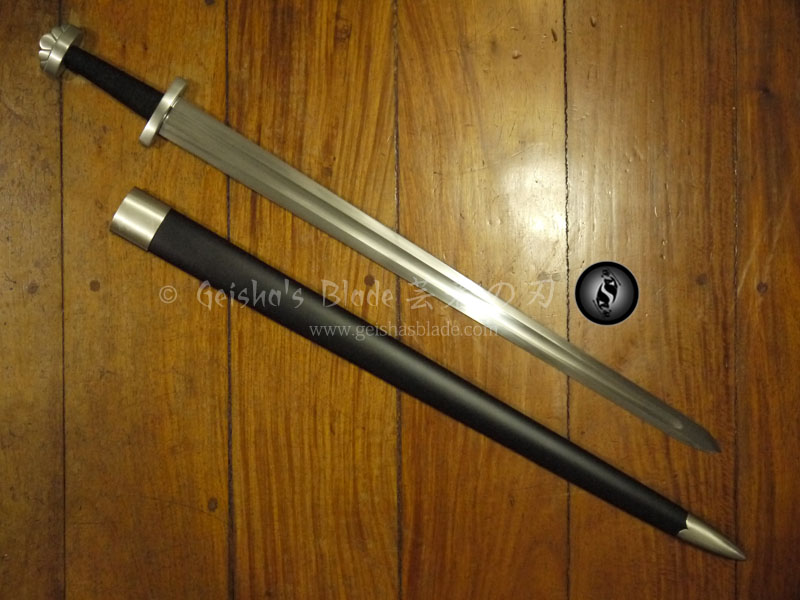












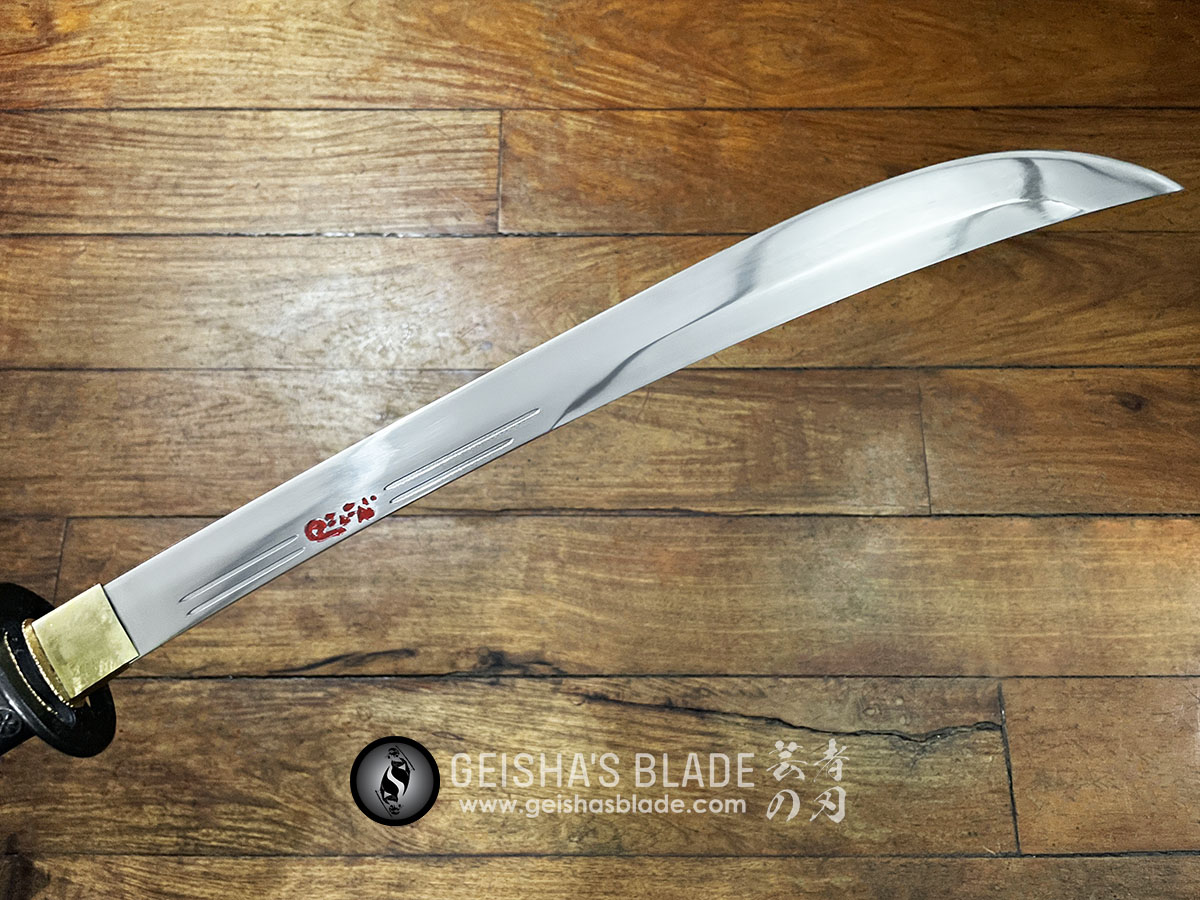




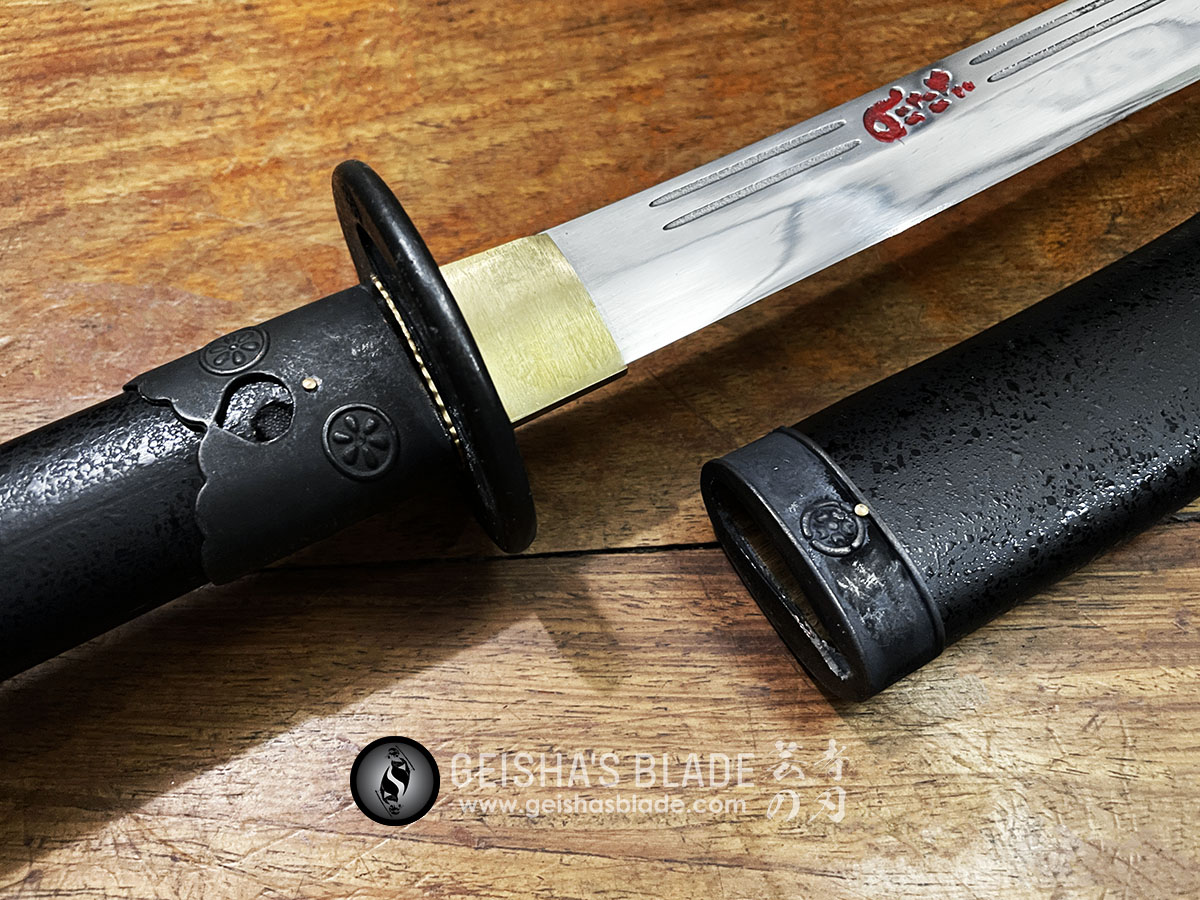
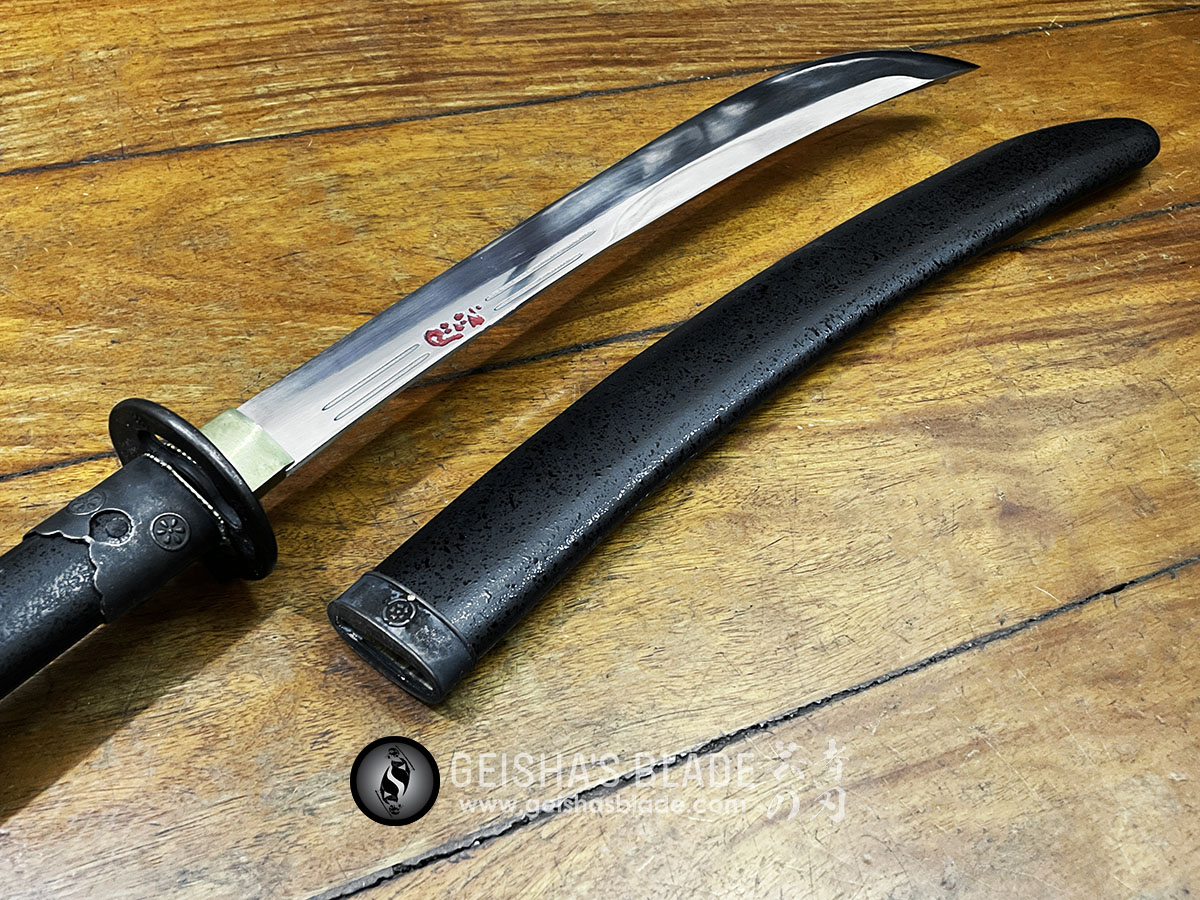




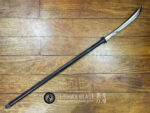



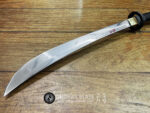

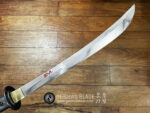












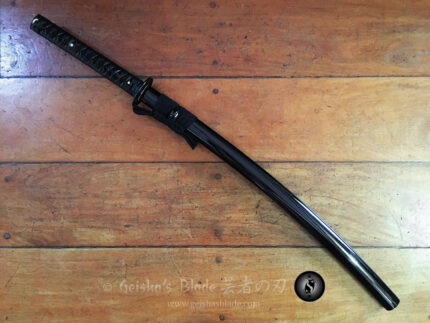










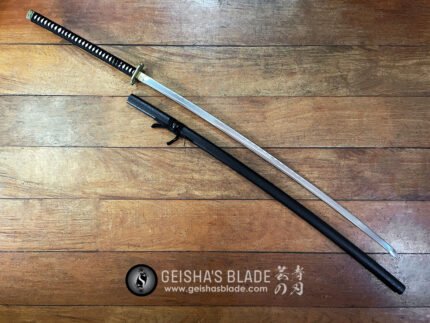

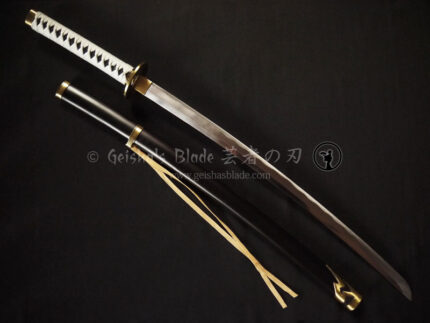

Reviews
There are no reviews yet.